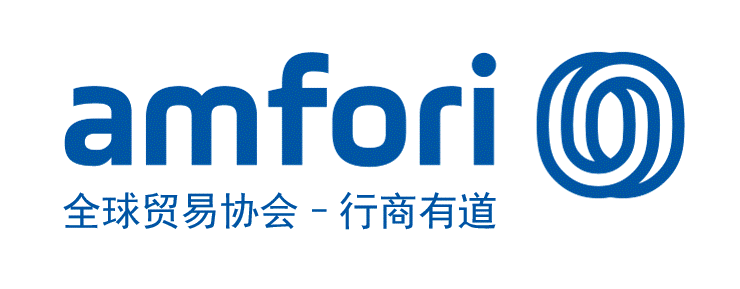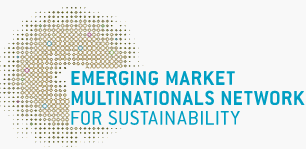Zero-carbon suggestions for enterprises
2021-09-14可持续发展经济导刊GoldenBee0

As part of an overall national strategy, the goals of peaking carbon dioxide emissions and achieving carbon neutrality will be specified and implemented in different regions and industries. Region- and industry-related policies will have a significant impact on enterprises.
At present, the ministries and commissions concerned have successively introduced a number of carbon related policies. In the next one or two years, the Ministry of Ecology and Environment, the National Development and Reform Commission, the Ministry of Industry and Information Technology, and the Ministry of Science and Technology will intensively introduce specific policies on peaking carbon dioxide emissions and achieving carbon neutrality. Local governments and key industries will clarify their respective timetables and roadmaps for peaking carbon dioxide emissions and achieving carbon neutrality, and central state-owned enterprises (SOEs) and other leading enterprises will also announce (some enterprises have announced) carbon neutrality action plans. The above policies or strategies, whether they come from the governments, industry associations or large central SOEs, will bring far-reaching impacts on the operation of enterprises. In addition, the construction of a national carbon market will also push key enterprises to make green transformations, and every enterprise will be framed by the market.
In addition, to understand "carbon neutrality", one needs to look outside. At present, nearly 120 countries around the world have proposed carbon neutrality goals, covering more than 65% of global carbon dioxide emissions and accounting for more than 70% of the world's economy. Carbon neutrality has become a global consensus. When Chinese enterprises trade with these countries, they will face the pressure of market access. In early March, the European Union announced that it would impose carbon tariffs on imported goods, which means that Chinese exports to the EU would have to be taxed if their carbon emissions did not meet the relevant European industry standards. At present, most of Chinese enterprises involved in foreign trade are carbon-intensive and export-oriented. Carbon tariffs will bring new challenges to them; therefore, there is an urgent need for enterprises to transform their business models, implement a green and low-carbon transformation, and reduce product carbon emissions.
Furthermore, Chinese enterprises will also face pressure from the supply chain. At present, many large multinational enterprises have announced their goals of achieving carbon neutrality, which will affect Chinese enterprises through the industrial chain and supply chain. Take Apple Inc. as an example, which promises to achieve carbon neutrality in their entire product life cycle by 2030, meaning that the industrial chain supporting will be necessary, and enterprises in the supply chain will be sifted out if they fail to meet the requirements. Consumers' preference for low-carbon and environmentally-friendly products will also force and push enterprises to increase their social responsibility and awareness of carbon emission reduction. As a result, carbon labelling, carbon footprint, etc. will also promote low-carbon consumption, low-carbon production, and green recycling.
From the perspective of macro trends, Chinese enterprises will also have new development opportunities under the goal of achieving carbon neutrality.
Taking the automobile industry as an example, it is very difficult for domestic brands to surpass their foreign counterparts in the field of traditional fuel vehicles. However, under the goal of achieving carbon neutrality, the low-carbon transformation of the automobile industry makes electrification become an important new direction. In the past ten years, China has been working actively in the field of electric vehicles, and China's lithium batteries for electric vehicles have occupied a dominant position in the global market. In the future, as 5G, artificial intelligence (AI) and other technologies continue to be integrated into the field of electric vehicles, whoever can lead the technology would be the leader. On the one hand, carbon neutrality provides opportunities for the industrial economy to switch the channel and expand its competitiveness. On the other hand, the goal of achieving carbon neutrality will also restrict the development of high-carbon enterprises, such as coal and power enterprises in which many international financial institutions have announced that they will no longer invest. But if Chinese enterprises can take the lead in new energy fields such as photovoltaics, wind power, and hydrogen energy, it means that they will have a broader international market.
To carry out the overall action plans for peaking carbon emissions and achieving carbon neutrality, the state will have an overall top-level design, and the goals will be specified and conveyed to local governments and industries. In the process of realizing the goals, supervision and assessment will be strengthened. In addition, at the macro level, relevant pilot projects will be carried out, such as carbon neutrality pilot demonstration zones and climate investment and financing pilots.
The state will carry out some key actions to reduce carbon emissions, such as the promotion of renewable energy, energy conservation and energy efficiency improvement, low-carbon transportation and green travel, low-carbon transformation of industrial parks, and deepening the establishment of a national carbon emissions trading market. It will also implement some key "carbon negative" initiatives to remove the carbon emissions that cannot be avoided through the use of negative emission technologies such as carbon sinks in the ecosystem, carbon capture, utilization and storage (CCUS), etc. and ultimately achieve net zero emissions.
Similarly, at the micro level, relevant national departments will also introduce policies to encourage carbon neutrality pilots, such as carbon neutral enterprises, large-scale carbon neutral events, carbon neutral individuals, and Puhui credits. In short, all of the action plans needs a lot of basic work, including the development of emission data system, monitoring system, financial infrastructure system, etc., which also involves the capacity building of various participants, international exchanges and cooperation, etc.
To analyze "how" an enterprise should do under the overall framework, it is necessary to clearly see the position of the enterprise in the industry, the source of pressure, and the market environment. The enterprise's action steps are roughly as follows:
Conducting a carbon situation checking, carbon accounting and verification, and monitoring carbon emissions: the scopes of carbon emissions in enterprises include: Scope 1, direct emissions; Scope 2, indirect emissions from purchased electricity and heat; and Scope 3, other indirect emissions, such as employee commuting, emissions from upstream and downstream production. Different types of enterprises would have different contents and boundaries in Scope 3, since Scope 3 emissions involve too much external data which makes it difficult to be managed. Hence, under normal circumstances, most enterprises only calculate Scope 1 and Scope 2 emissions when accounting for carbon emissions, but enterprises with many years of carbon management experience (such as Apple Inc.) will also include Scope 3 emissions into the management scope.
Making strategic decisions, that is, formulating a major plan to peak carbon dioxide emissions and achieve carbon neutrality, clarify the major emission reduction junctures, and actively promote carbon transformation. The formulation of strategies includes the following steps: First, policy constraint analysis. Enterprises should consider whether to just meet national policies or to meet both national and regional policies. Different regions have different policies and enterprises would face different constraints. In addition, market access conditions are different; therefore, import-oriented enterprises and export-oriented enterprises will also have different pressures. Finally, the carbon neutral supply chain and the tendency of consumers to choose low-carbon products/services are both key information that needs to be considered when formulating strategies. Second, industry positioning analysis. The peer level, upstream and downstream emission requirements, and the current emission status of the region are all critical and need to be considered. Third, making strategic decisions. To lead or to follow? Enterprises in different positions in the industry will make different decisions. Some enterprises may not want to pursue the leadership but remain relatively competitive, while some more ambitious enterprises need to formulate a leading strategy.
To peak carbon dioxide emissions and achieve carbon neutrality cannot be achieved overnight, enterprises need to formulate phased goals based on their own conditions and characteristics. Generally speaking, the first stage is to determine the peak value of carbon dioxide emissions and the year; the second stage is to partially achieve its goal of achieving carbon neutrality during operation (Scope 1 and Scope 2 emissions); the third stage is to partially or totally achieve the goal of achieving carbon neutrality in the supply chain (may include Scope 3 emissions). The principles for setting those goals are related to the internal and external situations mentioned earlier and the pressures on the enterprises.
Acting, that is, implementing carbon emission reduction actions, clarifying emission reduction requirements in the full cycle of the production chain, ensuring the effects of transformation, and participating in carbon trading to promote the implementation of carbon emission reduction. Enterprise overall actions to achieve carbon neutrality include two aspects: First, establishing a carbon emission management system; Second, achieving carbon neutrality. To achieve net-zero carbon dioxide emissions is to balance the "source" and "sink" of emissions. Generally speaking, the energy, electricity, transportation, and construction of enterprises will be included in carbon emissions, while carbon sinks usually require enterprises to purchase agriculture and forest carbon sink, green power certificates, etc.
The carbon emission management of an enterprise mainly includes three aspects: First, establishing a carbon emission management system, including the monitoring, verification and reporting of carbon emission. Second, enterprises that are included in a carbon emissions trading market need to conduct carbon asset management, including China Certified Emission Reductions (CCER) replacement, comprehensive compliance plans, carbon finance, quota management, etc. Third, capacity building. Enterprises must build their own institutional system, create related tools and cultivate talent teams.
The concept of carbon asset management is derived from the requirements of the carbon emissions trading market, and now its scope should be further expanded, not only focusing on the performance of the carbon emissions trading market, but also on investment and financing. Investment enterprises should be aware of the carbon emissions of various industries, so that the capital invested will not face policy risks, transformation risks, and disaster risks caused by climate change.
Brand Building involves commercial and market-oriented Initiatives. When all that mentioned above are clarified, enterprises need to decide "how to make it". For example, in terms of reducing carbon emissions, they can choose to adjust the industrial structure, save energy, improve energy efficiency, and clean and electrify energy. In terms of increasing carbon removal, they can choose CCUS, forest carbon sink, biomass carbon capture and storage, and direct air capture etc.
At present, many domestic central SOEs have made strategic plans and working goals on peaking carbon dioxide emissions and achieving carbon neutrality. Different industries are also preparing their respective plans and roadmaps for peaking carbon dioxide emissions and achieving carbon neutrality, and further clarifying the implementation paths, steps, and goals reached at different stages.
For example, 17 petroleum and chemical enterprises, chemical parks, and China Petroleum and Chemical Industry Federation (CPCIF) jointly issued the Pledge of the Petroleum and Chemical Industry's Carbon Dioxide Emissions Peaking and Carbon Neutrality; China Building Materials Federation issued a building materials industry initiative: that the domestic materials industry must fully peak carbon dioxide emissions by 2025; cement and other industries must take the lead in peaking carbon dioxide emissions by 2023.
In addition, high-carbon industries such as the power industry and the steel industry are also actively responding to the arrival of the national carbon emissions trading market, and have established carbon management departments or carbon asset management enterprises to respond to their carbon quota performance obligations as emission control enterprises.
Best Practices
- The 100-year brand — Air Liquide also has a sense of juvenile
- Beijing Public Transportation Corporation: Developing green transportation to build a harmonious and livable capital
- CGN: Building a modern factory in barren deserts and developing a new win-win cooperation model along “Belt and Road”
Upcoming Event

All the materials on the site “Source: XXX (not from this site)” have been reprinted from other media. They do not imply the agreement by the site.
All the materials with “Source: CSR-China Website” are the copyright of CSR-China Website. None of them may be used in any form or by any means without permission from CSR-China Website.
GoldenBee Official WeChat
Copyright © Csr-china.net All Right Reserved.
京ICP备19010813号










